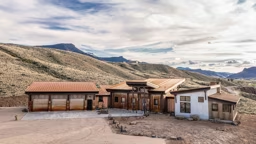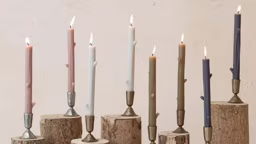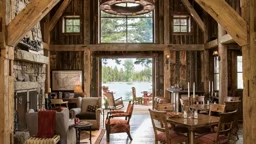The cabin was made for reminiscing. Sitting on the dock, feet dangling in the water or sipping a cool drink in front of a warm fire, my thoughts easily turn to cabin memories.
Like that time my brother stepped on a broken bottle in the lake and had to get stitches. Or that time I rode my bike off what I thought was a jump and landed in the resort’s garbage pit.
Maybe some cabin memories are best left as just that — memories. More and more cabin owners are looking back at past practices and realizing that not everything was better “back in the day.”
Pressure-treated Poison
As recently as 2004, it was common to find decks, fencing and even children’s swing sets built out of lumber that had been pressure-treated with arsenic to help prevent rotting.
However, data released by the Environmental Protection Agency (EPA) in 2003 showed an increased risk of cancer in children and adults repeatedly exposed to arsenic-treated wood. In addition, arsenic has been linked to immune diseases, cardiovascular disease and diabetes. After this report was made public, the industry abandoned the practice.
If you have outdoor construction items completed before 2004, consider testing them for arsenic. You can do this yourself by ordering a wood wipe kit from the Environmental Working Group for $25 (visit www.ewg.org to order).
If you find your wood has been treated with arsenic, and it just isn’t cost effective to tear it down and rebuild, there are things you can do to protect yourself and others:
1 Seal the wood every six months with polyurethane, or paint over it
with latex paint.
2 Do not pressure wash the lumber. Use a soap and water solution and disposable cleaning sponges.
3 Never sand arsenic-treated lumber.
4 Don’t store toys or tools under arsenic-treated wood, as rainwater can leech the chemical into and onto these items.
5 Make sure everyone washes their hands after coming into contact with arsenic-treated lumber — especially before eating.
Light My (Hazardous) Fire
It used to be so simple. With many cabins far from local disposal sites and the cost of regular waste collection too high, many cabin owners used to grab a barrel or dig an open pit, pile up the trash and let it burn. The resulting pollutants and dioxins (a group of highly toxic chemicals that settle on crops or land in your cabin’s yard and run into your lake) were then released, unfiltered, into the air.
Recent studies have shown this to be an extremely dangerous practice, increasing the risk of everything from rashes and headaches, to asthma and emphysema to heart disease. “Backyard burning,” as the process is often called, operates with very little oxygen, which means the garbage burns at low temperatures, increasing not only smoke but the level of dioxins and other pollutants as well.
The dangers and potential health risks of backyard burning have led the practice to be banned or strictly regulated in most areas.
Green Thumbs & Blistering Skin
Creosote is a wood preservative applied via pressure-treatment to railroad ties and utility poles, primarily. It’s obtained from the high temperature distillation of coal tar and can cause irritation of the skin, eyes, nervous system and kidneys. Long-term exposure can cause your skin to blister and peel. So, if this chemical is only found in commercial applications, what’s the danger to consumers? Railroad ties have become very popular in retaining walls and as a border around gardens.
While the risks of long-term exposure are unknown, it may be best to play it safe. If you don’t want to dispose of the timbers (which you can only do by carrying it to your county landfill — burning the timbers releases toxic chemicals into the air via smoke and into the ground and water via ashes) you should always wear longsleeve shirts, long pants and gloves when handling the timbers. Avoid prolonged exposure and wash your gardening clothes separately from other clothing.
Much like beehive hairdos and playing with Pet Rocks, after a bit of reminiscing about the dangerous materials once common in our backyards, one thought comes to mind — glad we don’t do THAT anymore!
Options For Reducing Trash
1. Use durable, long-lasting products and avoid disposable items (i.e., use real cutlery and dinnerware instead of plastic utensils and paper plates).
2. Consider composting yard debris and food scraps in your yard.
3. Visit www.findacomposter.com to locate a municipal composter where you can send your scraps and bio-plastics.
4. Get your unwanted items in the hands of people who want them.
Visit www.freecycle.org, www.throwplace.com or www.ireuse.com.
Other Bad Ideas From The Past
1. Pouring used oil on pathways: Once used to reduce the amount of dust kicked up on gravel and dirt driveways and pathways, it also allows the oil to seep into soil and groundwater.
2. Mowing all the way to the shoreline: Sure, your yard might look immaculate, but is that really important at the lake? Mowing that close to the water offers little erosion protection. Plus, lawn clippings are prone to tumbling into the drink — along with fertilizers or pesticides. Longer grasses act as a natural filter and help keep your lake clean and clear.
3. Spraying DDT: Once the most popular insecticide in the United States (80 million pounds were applied in 1959), it became illegal in 1972 due to environmental concerns about the chemical.
4. Planting invasives: Purple loosestrife, a beautiful but aggressive plant, can quickly degrade wetlands, smothering the area in its trademark purple flowers. Knapweed is another hardy invasive that often attaches itself to hay bales, allowing the unwitting gardener to plant the seeds of destruction on his/her cabin’s property.
Andy Bennett is a bit of a hypochondriac. He’s off now to take a long shower and get a tetanus shot — just in case.










